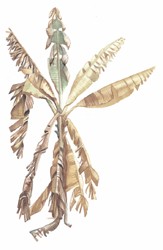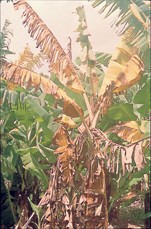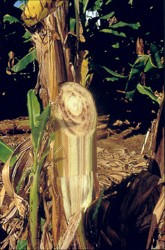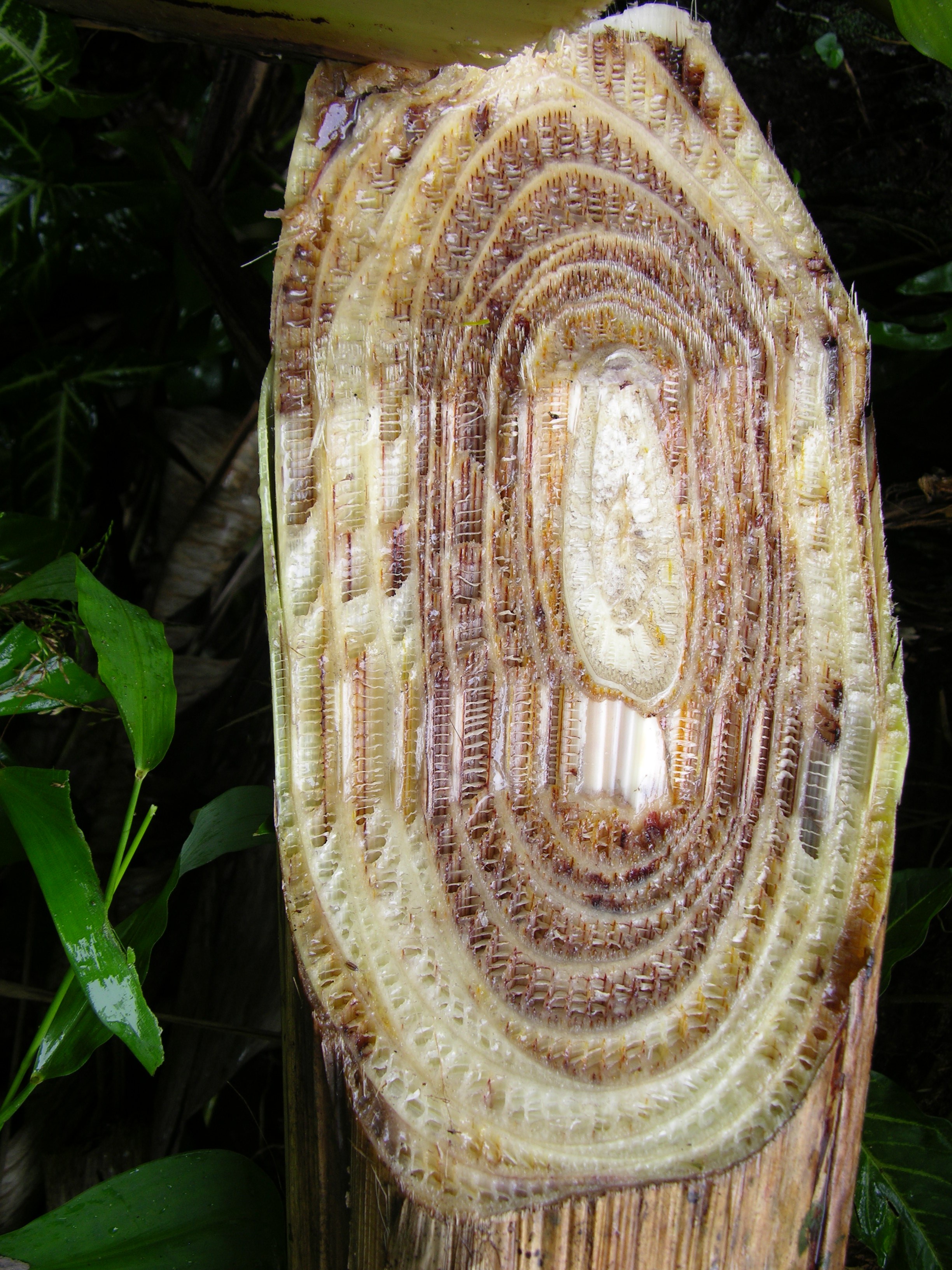Caused by Fusarium oxysporum f. sp.cubensealso known as Panama disease.

What to look for
Bright yellow banana plant leaves and if the stem is cut crossways close to the base, brown, red or yellow rings of discoloured tissue.
What you can do
- Do not move fresh fruit south out of the Torres Strait Protected Zone to the Torres Strait Permanent Biosecurity Monitoring Zone, or from either zone to mainland Australia without a permit and an inspection by a departmental biosecurity officer.
- Report any signs of suspect banana plant diseases to the department by phone on +61 7 4241 7800 or email NAQS.

Profile
Fusarium wilt (or Panama disease) is considered the world’s worst disease of bananas. It infects the roots of banana plants and then chokes the plant’s water supply, eventually killing it. Most different strains of the fungus attack a limited number of banana varieties. The fungus survives in the soil for decades and prevents the growth of new banana plants. One strain, called ‘tropical race four’, is by far the most damaging because it can attack nearly all known varieties, including Cavendish.

Banana leaves turn an obvious yellow
Identification
Leaves become a characteristic bright yellow – which is easy to see from a distance – and eventually die. You may not notice these symptoms when water supply is good. If you cut the stem crossways close to the base, you will see brown, red or yellow rings of discoloured tissue. The banana clump may produce several suckers before it eventually dies. Please note that there are other diseases that cause similar symptoms and so specialist advice should always be sought.
Distribution
‘Tropical race four’ of Fusarium wilt is spreading rapidly across several countries to Australia’s north and outbreaks have also occurred in the Northern Territory and in the major growing area of Tully, Far North Queensland, where it is currently under very strict containment.
Threat
Because the disease contaminates the soil for many years, production of susceptible banana varieties must stop in infected regions. That means fruit supply is reduced, affecting the market value of the fruit and income for growers.

Discoloured tissue of a banana plant stem
Keep a Top Watch!
Effective biosecurity controls provide the only way to stop the disease from spreading. The greatest danger of spread comes from moving infected planting material (suckers), which can look healthy on the outside. It can also be moved in very small quantities of soil. Watch out for Fusarium wilt and if you think your banana plants are infected, contact the department immediately.

Brown, red and yellow rings of discoloured tissue
Report bright yellow leaves and rings of discoloured tissue in cut stems of bananas.
